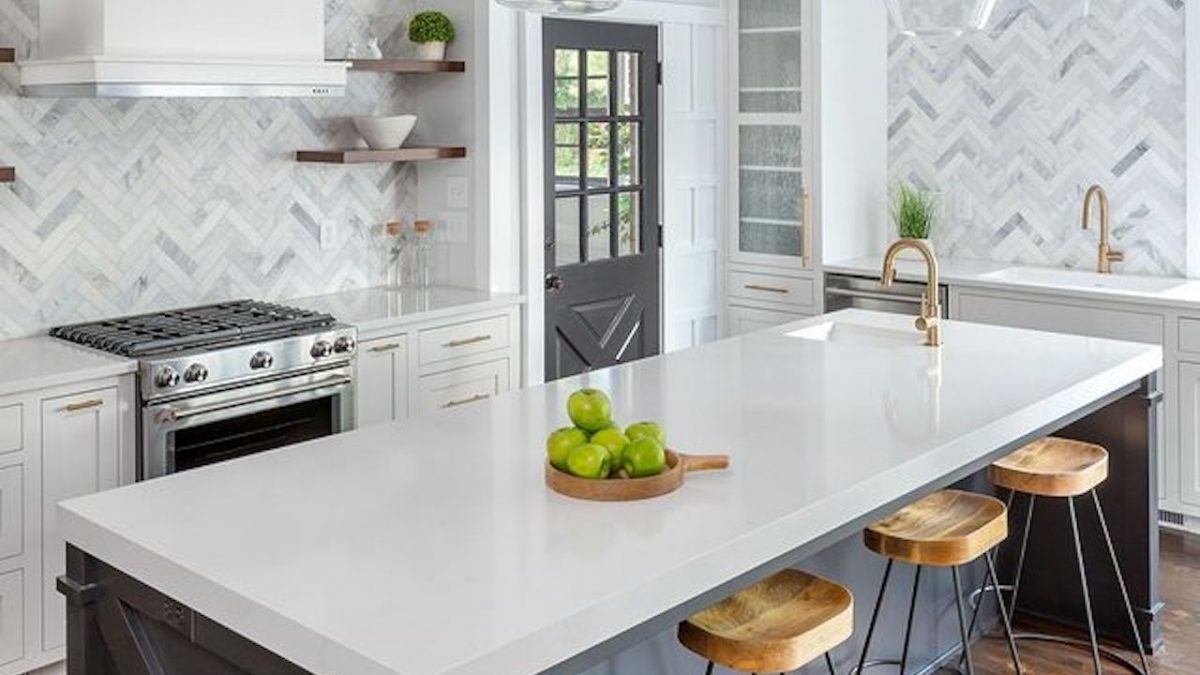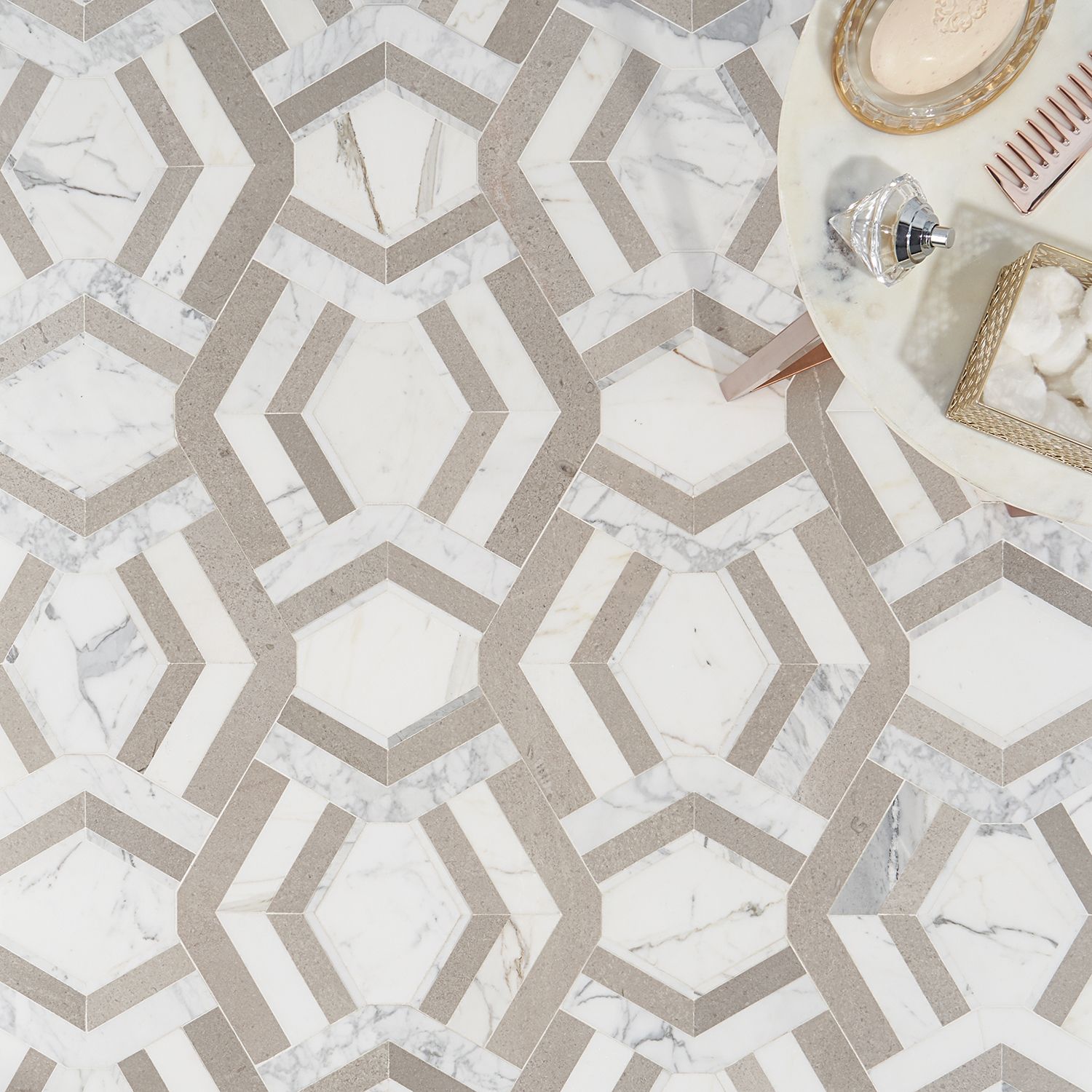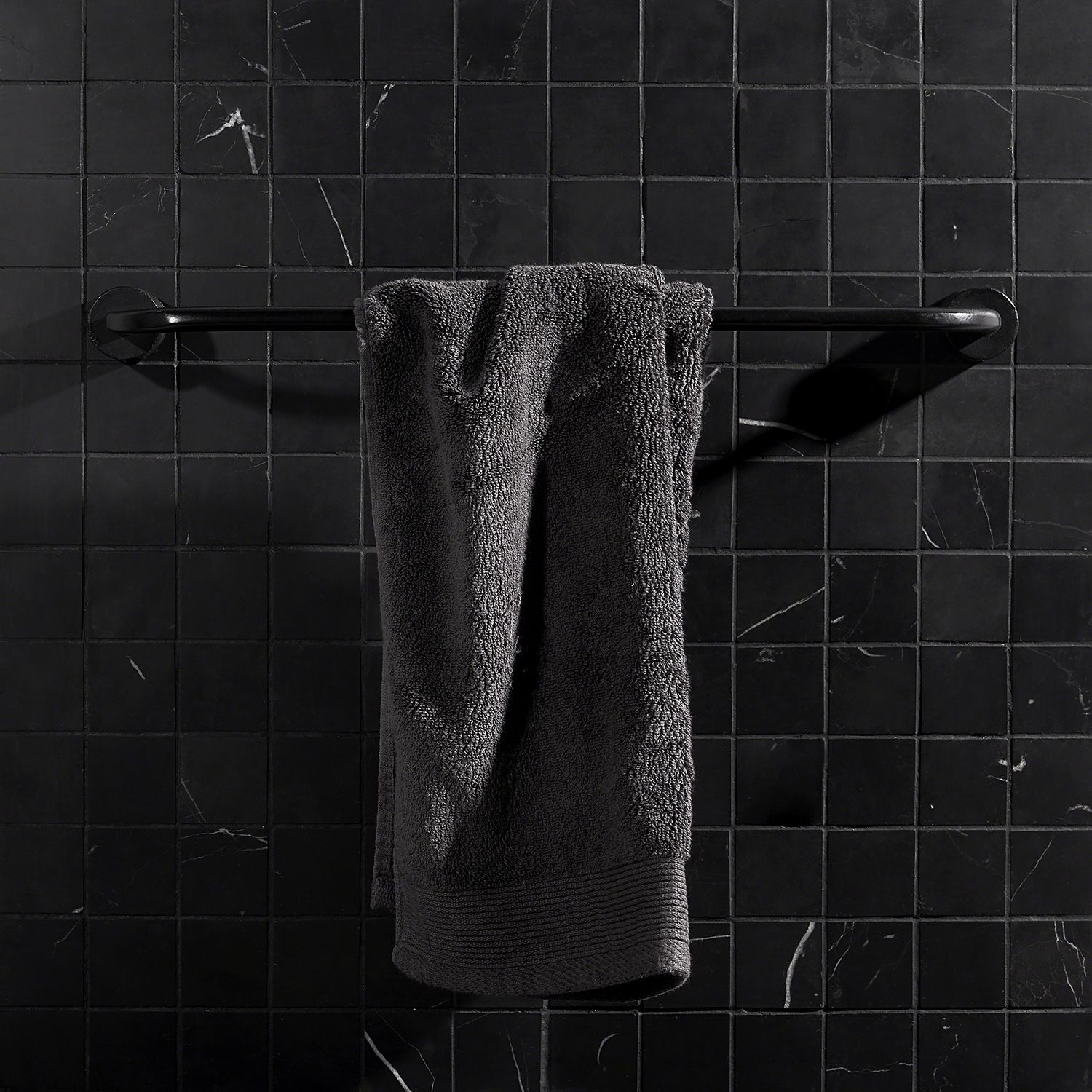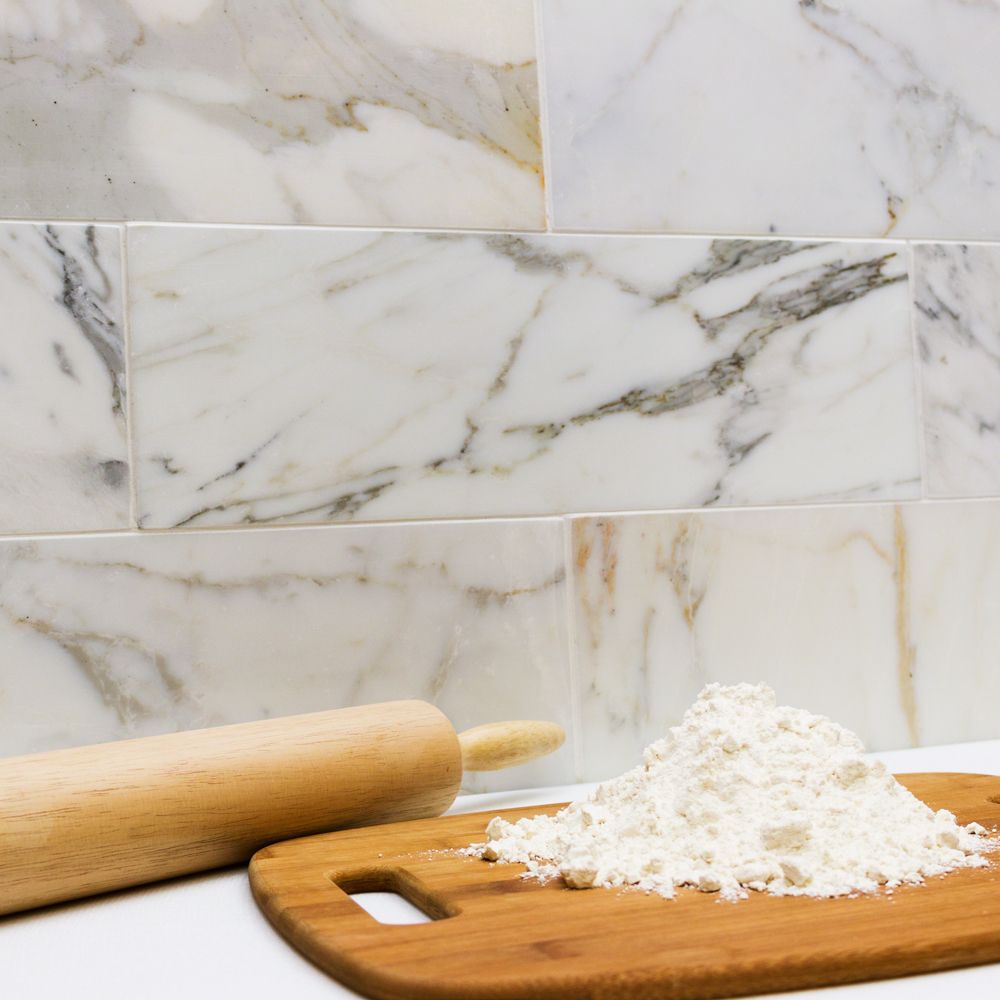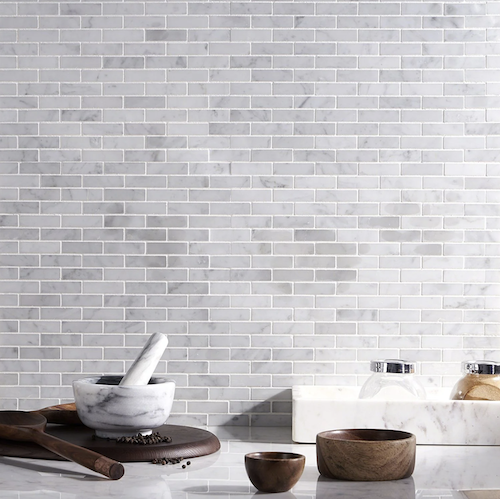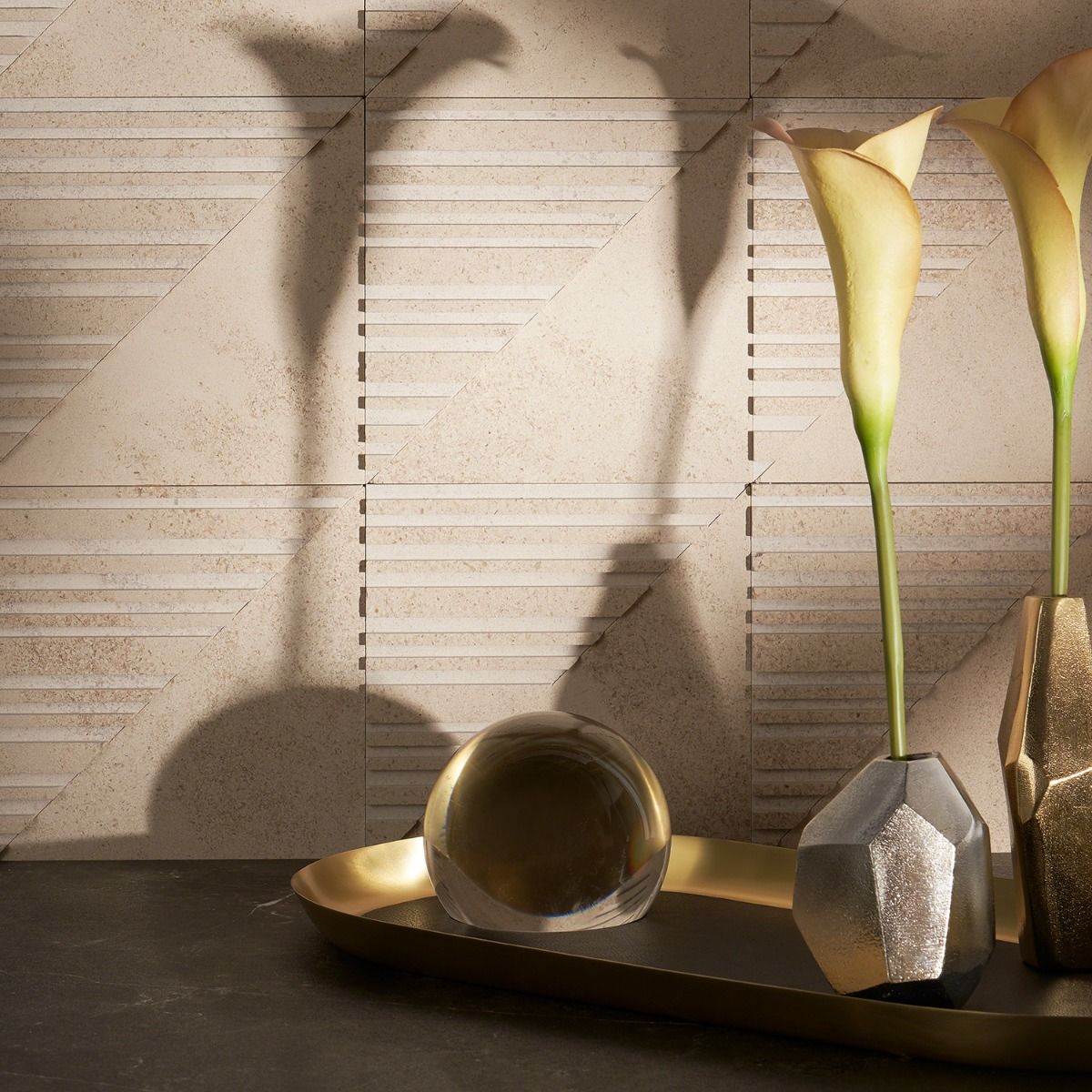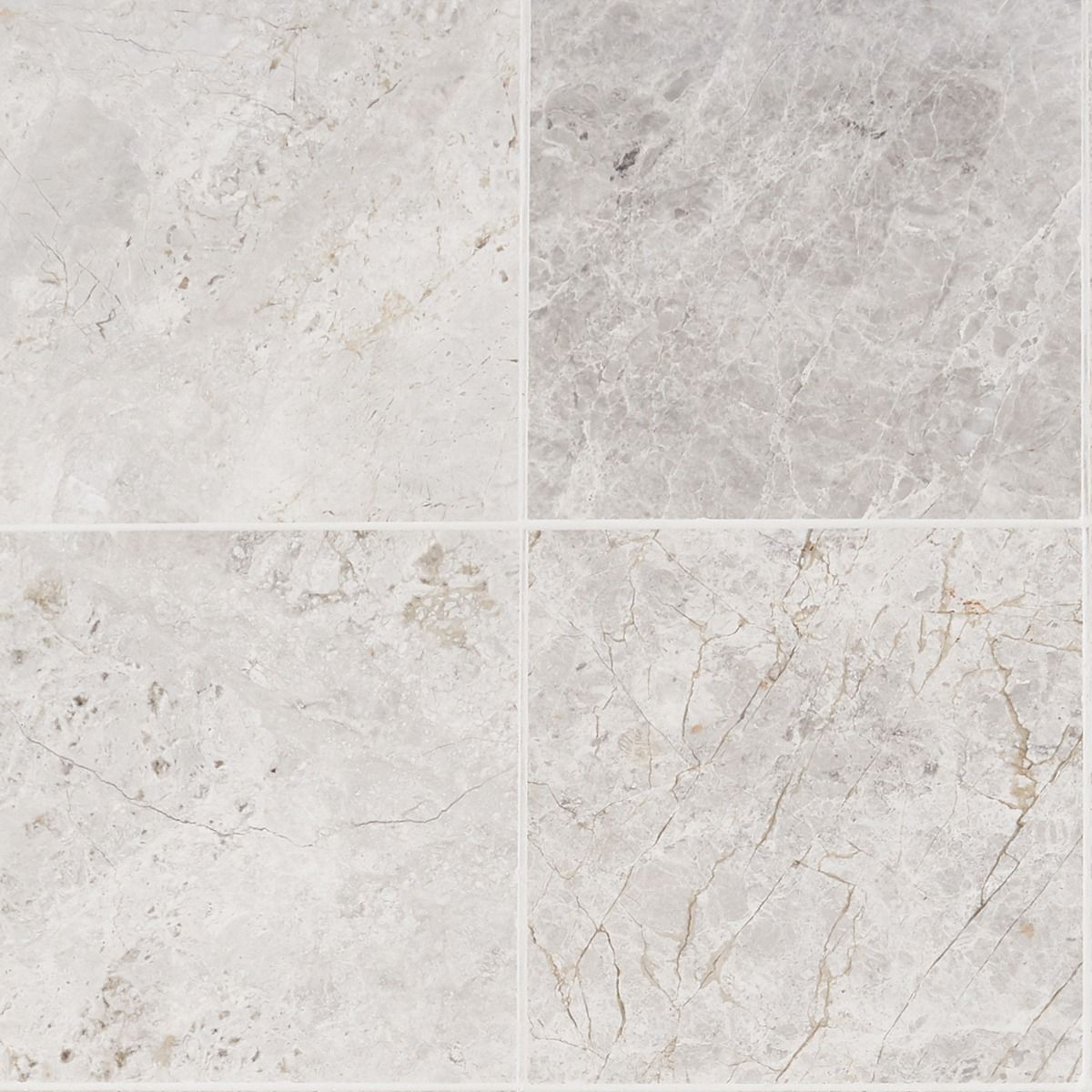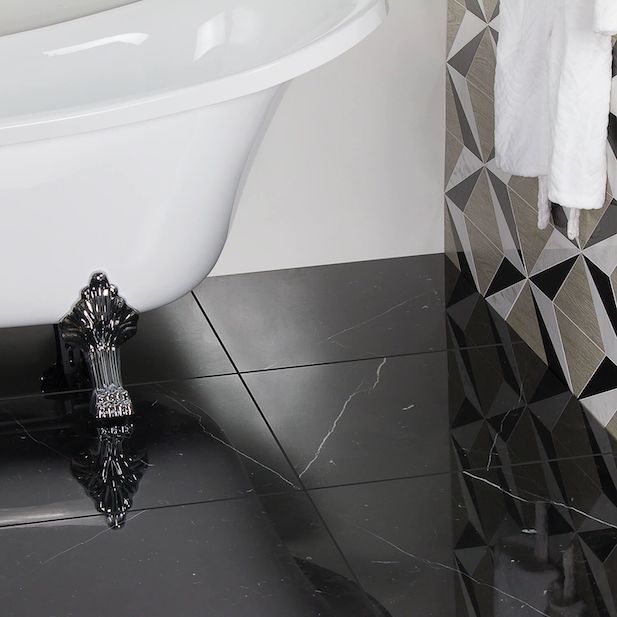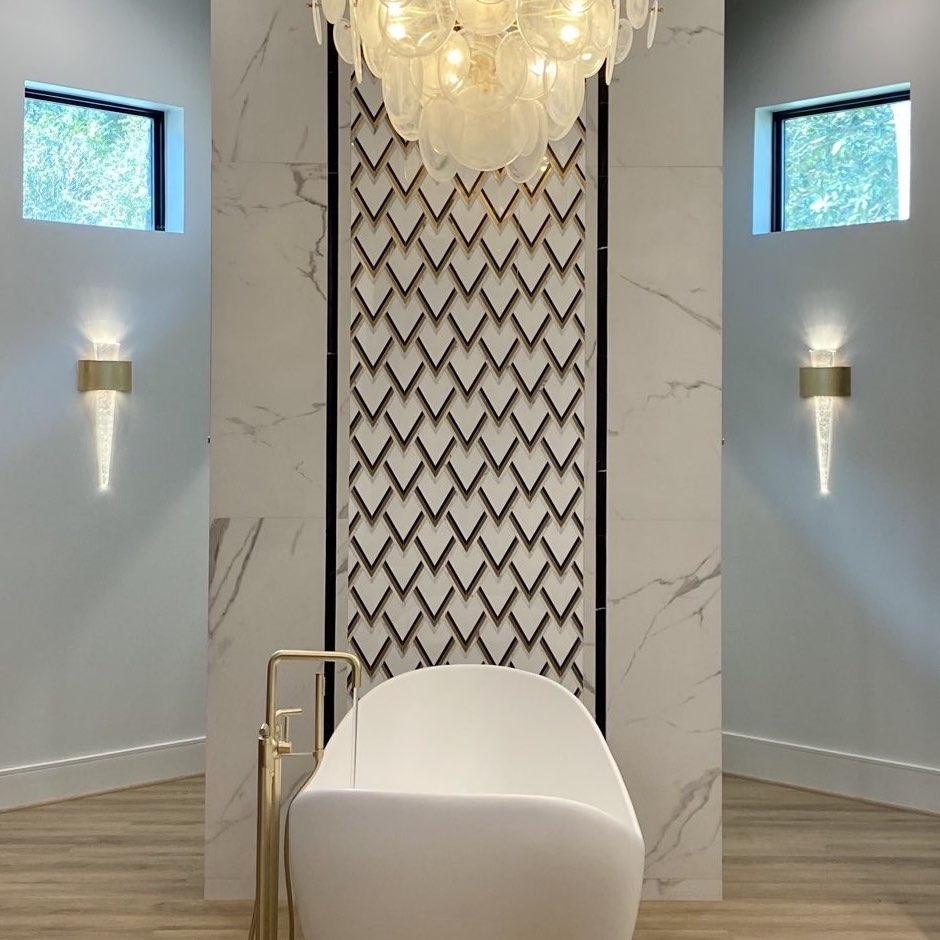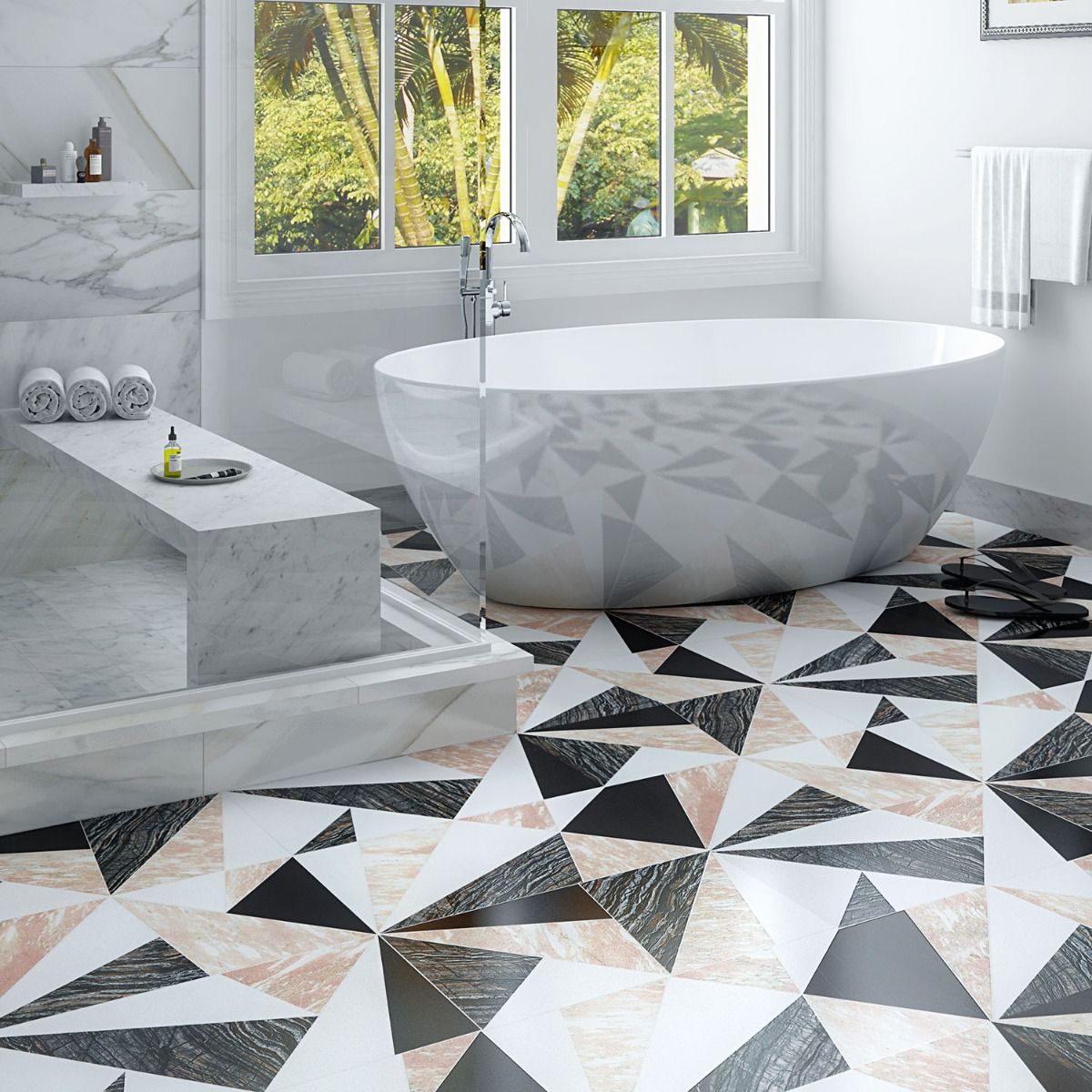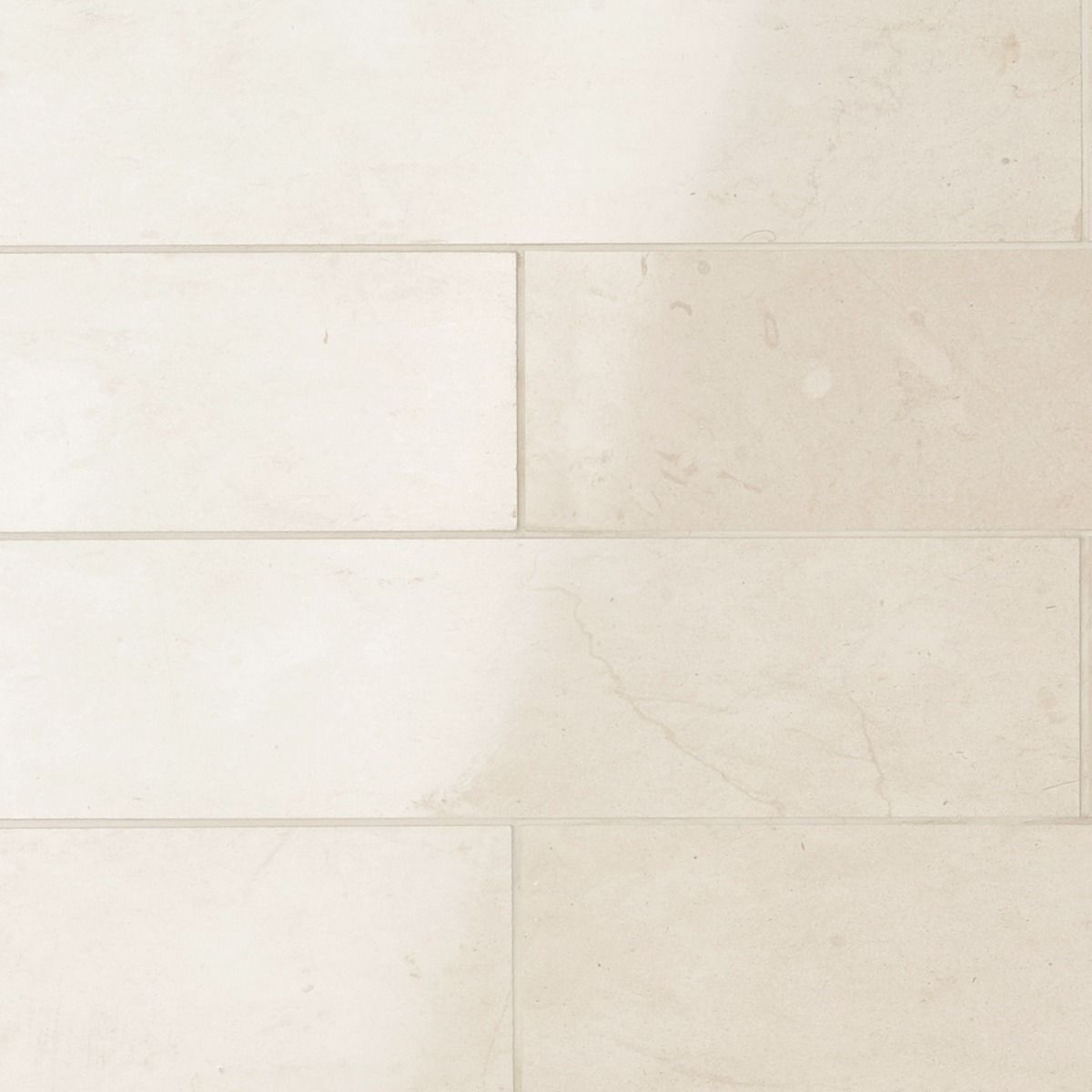Beautifully organic and highly enduring, stone has always been a sought out element in architecture and design. From the grand temples of the Roman Empire to the embellished marble facades of Baroque churches, stones like marble, granite, limestone, travertine, and quartzite have been a consistent choice for elegant, impressive, and impactful structures throughout history.
But great and soaring architecture is not the only design that benefits from the unique qualities of natural stone. Thanks to its durability and versatility, natural stone has made its way into our homes in flooring, walls, and accent features, becoming the main material of choice for classic as well as modern environments. These versatile, resilient, and elegant materials find a home in any style or décor. Let’s explore the things you should know before working with stone, as well as some inspiring ideas for your next natural stone project.
Considerations When Designing with Natural Stone Tile
Natural stone is a popular choice among designers and homeowners alike for anything from showers to countertops. The popularity of this element continues to grow, as does the variety of sizes, shapes, textures, and unique stone combinations.
But what do you need to know when considering natural stone for your project? For example, is all stone the same? What are the benefits of using stone in your home? How to maintain natural stone surfaces in a high-traffic environment? Let’s take a look at the answers to these questions and more.
Hardness & Durability
The first major attribute to consider is how hard a stone naturally is. This is important in determining how much traffic it can endure and where it can be used. Harder stones, like quartzite and many granites, can be used for heavy rolling loads and high-traffic areas. Softer stones, like onyx and travertine, are best used in areas that don’t receive heavy use. The harder the stone, the less likely it will be to scratch. The second major factor is know if it is heat resistant. This is especially important for countertop use in kitchens or outdoor areas. A third factor is porosity, or how likely is the stone to soak up liquids when exposed. All natural stones are porous and will require a sealer to maintain their original look, but some are definitely more porous than others. This is important to keep in mind since more porous materials require a higher level of diligence when maintaining a protective barrier from liquids and other staining and etching hazards. Let’s take a look at some of the most popular natural stone types and their attributes.
Relatively porous stones, such as marble and limestone, work well on floors, walls, and bathroom countertops, but are less recommended to use in kitchens, for example. Harder stones, such as granite, are ideal for more challenging environments such as kitchens and showers. Another good example is quartzite, a stone similar to marble in its pattern but less porous, which makes it more fitting to deal with high traffic areas. For outdoor use, the most recommended stone is slate – a natural stone that can sustain extreme temperature changes for a very long time.
Natural Variations
As the name implies, natural stone is not man-made. It is important to know that there is a natural tone, hue, and pattern variance to most stones. While some stones are naturally more uniform in texture and pattern, stones like marble or onyx can often present bold natural patterning and color variation. While it is considered a design plus for many projects, it’s always a good idea to purchase a little extra material for your stone project, to be able to select your favorite patterns. You can also request to see a picture or sample of the particular lot of stone that you will be purchasing if you are concerned about natural pattern variation. This is a good idea if you are using larger tiles and slabs since the overall pattern can make quite an impact on your design, but mosaics made up of smaller pieces tend to show enough of a pattern to communicate the essence of the stone. If the idea of too much natural variation keeps you up at night, you may want to consider using a porcelain tile with a stone look. This is a good alternative if you are expecting your tile to be an exact replica in pattern and color to your sample piece.
Maintenance
While stone is considered a highly resilient material, it can be susceptible to scratching and staining if not maintained properly, just like any other surface. Routinely, natural stone tile should be cleaned with highly concentrated pH neutral cleaners, that will not affect existing sealing or coating. It is very important to avoid cleaning materials that contain acid or bleach. In addition, sealing is highly recommended for all types of stone, especially marble, limestone, and granite. High-quality sealing can provide stain and scratch protection and will extend your stone’s life.
Sustainability
Abundantly available in nature and extremely durable, most natural stone is considered an environmentally sustainable choice for design. As it is 100% natural, stone does not contain any artificial materials such as plastic and can be relatively easily recycled or upcycled. Natural stone can last lifetimes, if maintained properly, and not having to continually replace a floor keeps material and waste out of landfills. And finally, most stones do not contain natural toxins or any harmful materials and can be safely used in kitchens, bathrooms, indoors, and outdoors. You can also choose environmentally-friendly sealers and cleaners to ensure a lower impact on VOC emissions.
Finish Matters: Choose the Right Surface
When it comes to natural stone tile, finish is everything. The type of finish is not only an aesthetic choice, since looks do play a large role in choosing a stone finish, but it’s also a practical one. When choosing between stone finishes, it is important to consider the where and how the tile will be used, but you should also note that all natural stones should be sealed and properly maintained to protect their beauty and performance.
Polished Finish – The most common finish for natural stone tile is polished, which creates a glossy, mirror-like shine. Aesthetically, a polished finish creates an elegant and sophisticated look and helps to bring out the intricate details and variations of the stone. Practically, it provides a smooth work surface and can help protect the stone against spills and stains. It is good to note that the reflective nature of the polished finish can show more than a honed or matte finish. It is also not as slip-resistant and could pose a slipping hazard if used on a floor area that is exposed to water or other slippery materials.
Honed Finish – Providing a muted, softer look, a honed finish has become more and more popular in recent years with trendy matte surfaces becoming unanimous with modern design. This finish retains the natural character of stone, but can still provide a smooth work surface and can be used as a countertop, but may not be as easily cleanable as a polished finish. Honed finishes are also much more slip-resistant than a polished finish, making them ideal for flooring applications for both interior and exterior.
Textured Finish – Tumbled, leathered, or bush-hammered: stone tiles come in various textures and patterns that can add a decorative flair to your design while retaining the raw beauty of the natural material. Usually offered with little to no shine, textured stone adds depth and dimension to space and can often hide scratches, staining, and fingerprints better than smoother surfaces. On the other hand, textured surfaces are harder to clean and therefore aren’t recommended for surfaces where cleanability is important, like kitchen countertops. Perfect for exteriors, fireplaces, backsplashes, or accent walls – textured stone tiles add a unique flair without compromising the calm feel of natural stone.
Small Touches Can Make a Big Impact
When most people think of natural stone tile they think of countertops and flooring. However, incorporating natural stone in your home doesn’t have to be a major project involving a big budget and lots of construction. There are many ways to incorporate the beauty of stone on a smaller scale, with unique accents that can make just as much of a design statement as a big feature wall.
Looking for a nice stone accent with less hassle? Consider a stone countertop for a small bathroom – easy to install, simple to maintain, and can make a big difference in your space.
If your living room has a fireplace you’re thinking about upgrading, try natural stone tiles. With a simple application process and countless design options, a tiled fireplace can add a unique flair to your space.
To take it up a notch, think about a new stone backsplash. Covering a relatively small surface, installing a new backsplash can be an easy D-I-Y job but make a huge impact on your kitchen.
Stone is Not All Neutral: Experiment with Color
If you’re looking for a colorful, eclectic, or playful design but still want to use natural stone – you can! Naturally or artificially colored marbles, exotic stones, or even natural geodes quash the image of stone as minimalist temples of white and gray. In fact, from lavish golds to vibrant colors, natural stone tile in the modern age offers a lot of room for creativity.
A bold colored or patterned stone is a uniquely sophisticated way to add a pop to your space, combining the innate elegance of stone with a little something different. It could be used as a feature wall, a kitchen backsplash, or even a countertop. Used as an interior’s focal point or as an understated, yet novel, accent, stones in interesting shades or strong vein patterns are an effective way to give your space a boost.
Timeless Luxury for Any Style
With a natural look and feel and countless benefits, natural stone tiles are an obvious choice for interior design and architecture. As an increasing number of homeowners and designers incorporate stone elements in their spaces, creativity kicks in an innovative and bold designs are modernizing one of architecture’s oldest staples.

